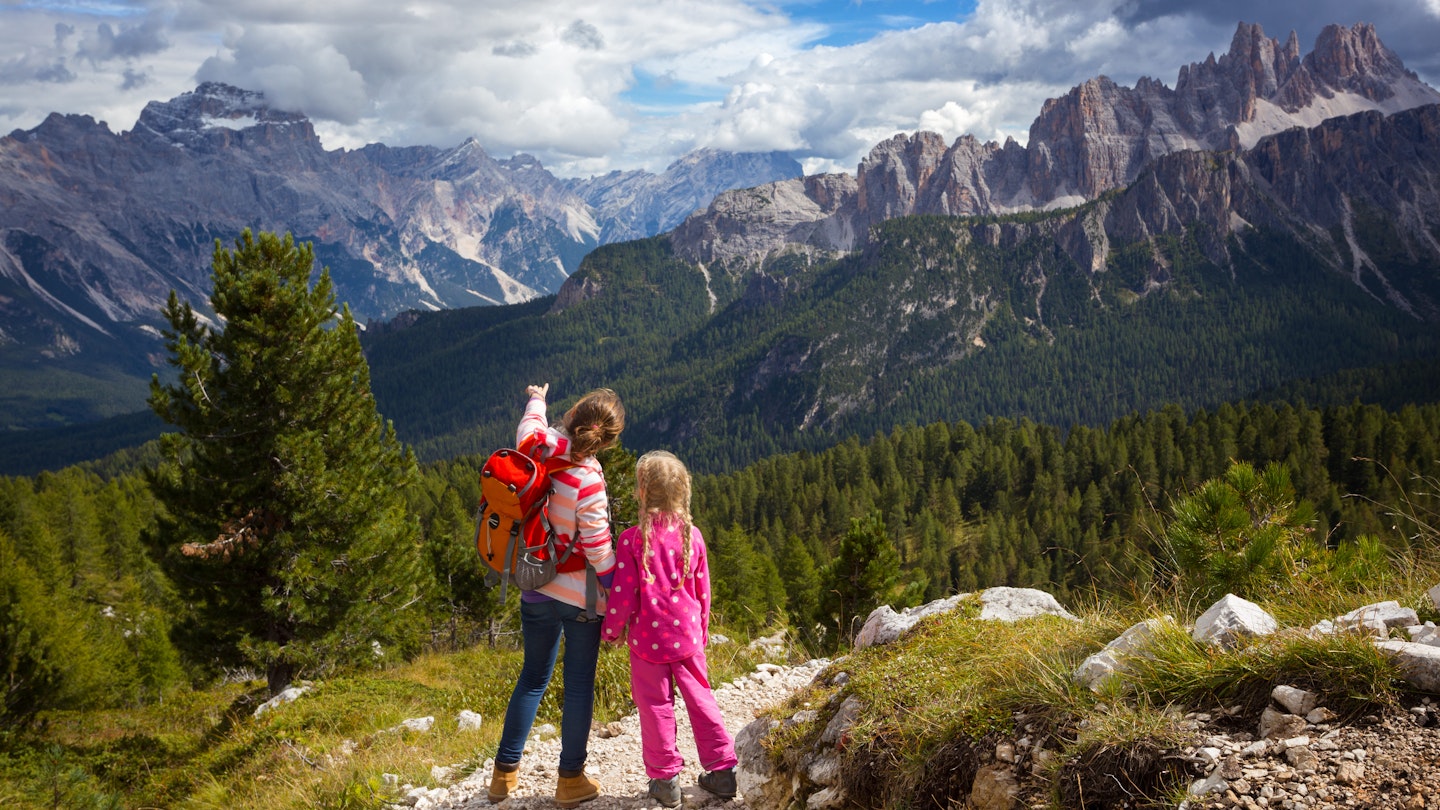Hiking with children can bestow them with a love of the outdoors and a thirst for exploration that lasts a lifetime. However, before the adventures begin, you have to succeed in dragging them off the sofa and into the wifi-free wilderness. Turn square-eyed digital devotees into wide-eyed walkers with these helpful tips and tricks for hiking as a family.
1. Play and plan together
Involving children in the planning of an outdoor adventure can greatly engage their interest. Show them some potential routes on a map or a computer, and ask them to choose which one you follow. During the walk, allow them to carry the map or GPS unit and lead the way for a while. Afterwards, review the route together to highlight how much they’ve achieved and let them know how proud you are.
2. Take baby steps
Starting small is essential. Tailor treks to suit the capabilities of the youngest or least outdoorsy member of your group; the last thing you want is for kids to become tired and upset before the end of a walk. Little heads come equipped with big memories, so it’s vital that your early adventures end positively. Begin with shorter strolls and gradually build up to longer missions, sticking to routes that are comfortably below 10km (6 miles) until kids reach 10 years old.

3. Be prepared
Letting kids get hungry or cold during a trek is another avoidable disaster that could dampen their enthusiasm for future trips. Therefore, make sure you pack plenty of warm and waterproof clothing (layers are always best), and take lots of food to keep them energized. Healthy snacks such as fruit and nuts are ideal, but remember that a sweet treat delivered at the right moment—like at the summit of a big climb—can perform magic tricks for morale.
4. Get yourselves geared up
Encourage children to prepare their own small backpack, filled with a mix of essential equipment and fun extras: a magnifying glass for inspecting insects; a torch for caves, hollow trees, and emergencies; binoculars for wildlife spotting; and a camera to catch shots of the grown-ups falling over.
If you have a GPS unit, you could add an extra layer of interest to a walk with a spot of geocaching—a worldwide treasure hunt involving following coordinates and clues to discover hidden “caches” containing little trinkets.

5. Keep it interesting
The success of any walk with children depends on how interesting you make it. You know your own kids best, so why not personalize the trek? If they like animals, choose a trail where you’re likely to spot wildlife; if they’re into make-believe, go looking for fairy houses and trolls within woods and forests.
Most kids love exploring rock pools, caves, and dunes, which makes coastal canters always a hit. Older children might be more challenged and intrigued by a night hike, where they can search for nocturnal animals with a head torch, or join a full-moon walk such as those offered at Bryce Canyon National Park in Utah, USA. If you can find a hike like the one through the Wood of the Water in the Brecon Beacons in Wales—where it’s possible to walk behind a waterfall—you’ve found a guaranteed winner.
6. Share the experience
Wild walking is a fantastic way to spend quality time with your children; they’ll often chat freely while you wander, well away from digital distractions like their beloved TVs and tablets. However, sometimes it’s good to let them bring a buddy; if they get a game started, miles are covered without them even noticing. Just beware of signs of mutiny—whining is highly contagious and can quickly spread among a group of kids. Keep everyone enthused by rewarding positive attitudes and achievements.
7. Big-up the backstory
The history, myths, and legends surrounding Europe’s many castles, ruins, and Neolithic remains will captivate curious little hikers. Go looking for mysterious boggarts in Yorkshire’s Peak District, or seek out a camera-shy monster from the shores of Loch Ness in Scotland.
In Australia, New Zealand, and America, geographical features are often associated with indigenous creation tales, which can enliven a walk and ignite their imaginations. Kids might even enjoy inventing their own stories to accompany their surroundings.

8. Aim to please
Ensure your hike concludes somewhere that has real appeal for children. It might be a beach, a castle, or a playground, or it could simply be the promise of ice cream or a glass of lemonade—giving them something to look forward to and delivering on your promises. Keep objectives achievable, but don’t hesitate to aim high; kids will feel very proud of themselves.
9. Don’t run before you can walk
Attempting to push children along too quickly is a significant mistake; hiking should feel like fun, not a race. If you’ve left it too late to comfortably reach your intended destination, adapt your plans. They may want to climb trees, play hide-and-seek, skim stones, kick autumn leaves around, collect pebbles, and pick blackberries along the way, and they certainly should—that’s all part of the outdoor experience.
10. Up the ante
Once kids are comfortable tackling trails, increase the adventure level to keep them excited by planning an overnight hike. Most youngsters find the concept of sleeping outside absolutely fascinating—and it’s still possible to ensure comfort in the backcountry with hot chocolate and toasted marshmallows. Choose your location and timing carefully; clear skies will enhance the experience for everyone, and stargazing in the wilderness is truly mind-blowing for both young and old.
Dartmoor offers many amazing walks and is among the few places in England where you can legally wild camp, while many national parks worldwide provide safe backcountry camping conditions. In Yellowstone National Park, you can even rent a llama to assist in transporting gear to your wilderness base—and there isn’t a child on earth who wouldn’t adore having their own llama for a long weekend.





